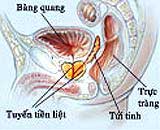 Prostate removal surgery can easily damage the nerves responsible for penile erection, leading to erectile dysfunction. However, doctors can address this condition.
Prostate removal surgery can easily damage the nerves responsible for penile erection, leading to erectile dysfunction. However, doctors can address this condition.
Most patients undergoing prostate surgery are over the age of 50, and 75% of them still engage in sexual activity. Before surgery, doctors will explain to patients that they still have a significant chance of resuming normal sexual function (erectile capability) after some time, and regardless of the outcome, effective treatment options are available to help them regain this ability.
In principle, this surgery intervenes with the “neurovascular bundles” that facilitate penile erections, which run alongside the prostate. This can result in erectile dysfunction. However, it has been observed that even when these nerves are preserved, erectile dysfunction may still occur due to the removal of the surrounding nerve structures that contribute to the erectile process by allowing blood to flow into the erectile tissue.
The important nervous system mentioned can gradually recover over 18-24 months. However, when the prostate tumor is large, surgeons may have to perform a wide excision, making it impossible to preserve these neurovascular bundles.
Immediately after prostate removal, regardless of the extent of the incision, patients are advised to inject a vasodilator into the erectile tissue of the penis to expand the small arteries there. Within 10 minutes of the injection, an erection will occur. This erection can last from 10 to 60 minutes, allowing for normal sexual intercourse.
Patients who undergo early surgery need to inject twice a week for 6 months to a year to fully restore immediate erectile function. If sufficient erection is not achieved, oral medications like Viagra can be used for support. The rate of recovery of sexual function is 60-70%. In patients with a significant incision, immediate erectile function is often permanently lost, necessitating the injection of medication into the erectile tissue before each sexual encounter.


















































